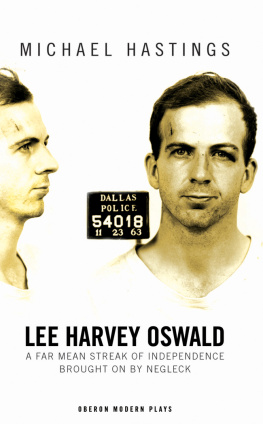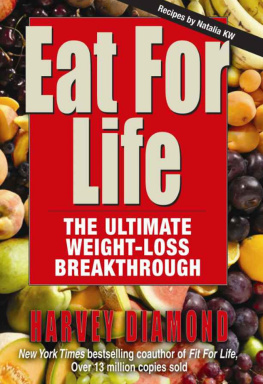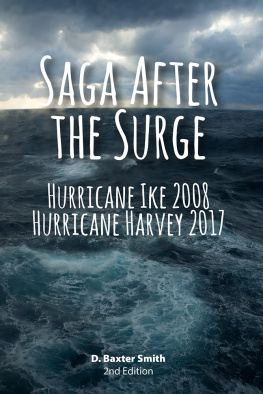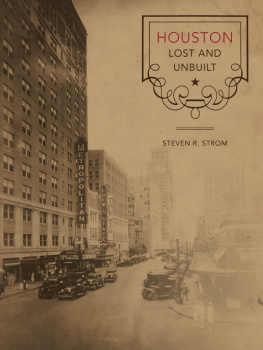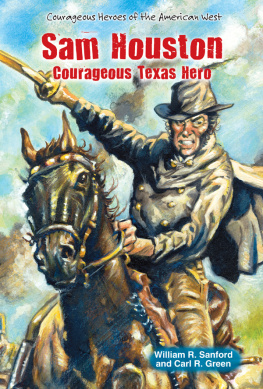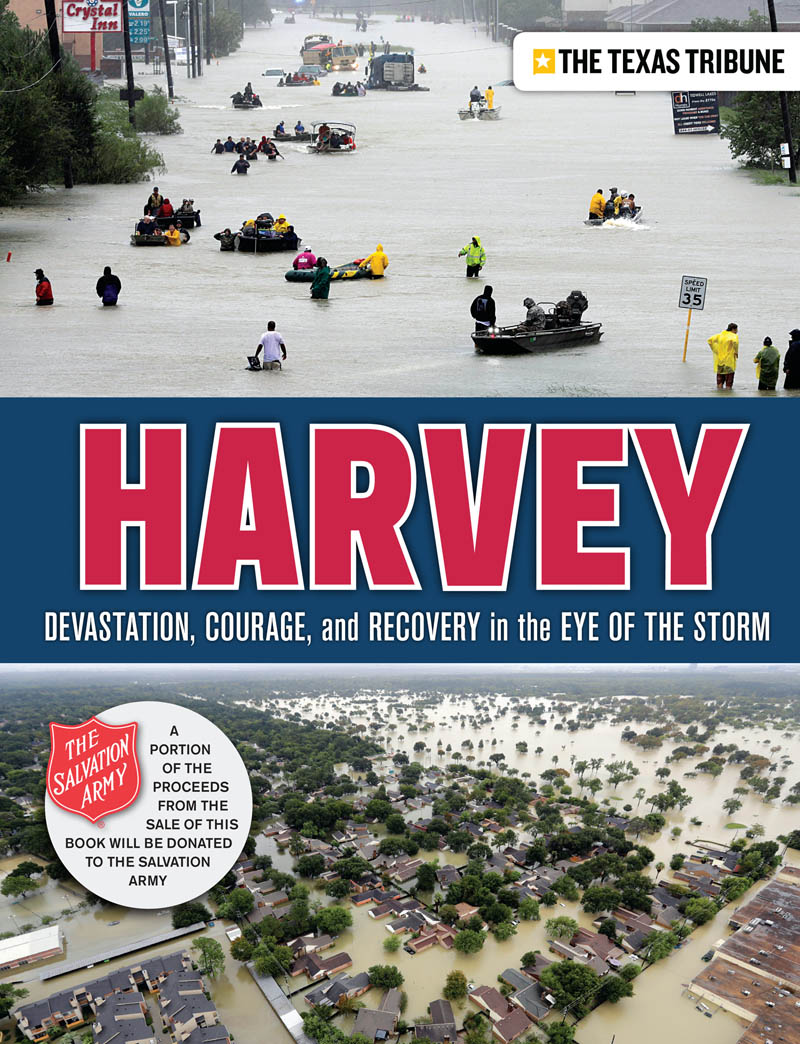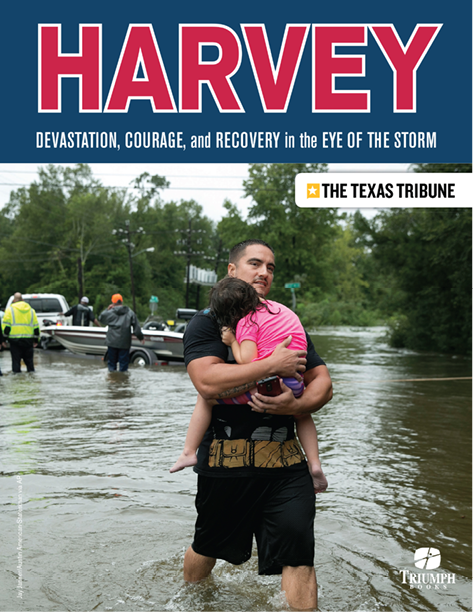
Contents
Introduction by Emily Ramshaw, Texas Tribune Editor-in-Chief
When your state is smacked head-on by a hurricane, when coastal communities are nearly wiped off the map, when the fourth-largest city in America is submerged in floodwater, a public-service newsroom doesnt think twice. It springs into action.
Thats what happened at The Texas Tribune when Hurricane Harvey made landfall in Texas.
It was a storm scenario our reporters had anxiously and repeatedly warned of in the last year with colleagues at ProPublica and Reveal from the Center for Investigative Reporting:
Harveys powerful winds a Category 4 upon impact near Rockport, the strongest Texas hurricane in half a century demolished beachfront communities, wrecking vacation homes and trailer parks alike, and tossing boats and cars around like confetti.
And its unprecedented rainfall a mind-boggling 52 inches drowned Houston, an already flood-prone city of more than 2 million, as well as communities up and down the coast. Highways turned into wave pools, full neighborhoods into lakes. Bayous breached their borders and reservoirs spilled into streets.
Locals, many of whom heeded officials calls to shelter in place, were forced to make daring escapes as the floodwaters rose, or await brave first responders, many of them good Samaritans who hurtled into the storm in airboats, canoes or monster trucks.
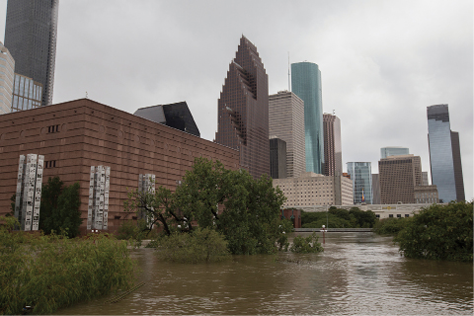
Buffalo Bayou jumped its banks and flooded downtown Houston on Sunday, Aug. 27, 2017. Photo by Michael Stravato
Sadly, not everyone made it to safety.
An elderly couple and their four great-grandchildren died when floodwaters swept their van off of the road.
A woman drowned in a rain-swollen canal while trying to carry her toddler to safety; the three-year-old, who survived, was found clinging to her mother.
Four volunteer rescuers perished when a strong current dragged their boat into a power line.
A 34-year veteran of the Houston Police Department drowned in his car trying to get back to work.
Amid these chilling tales and heartbreaking losses came the devastating tallies: More than 80 deaths. An estimated $180 billion in damage. Enough debris to fill a college football stadium more than 100 times over. And thousands of coastal residents with nowhere to live, nowhere to attend school, no semblance of normalcy in their futures. At the height of the storm, 30,000 Texans turned to emergency shelters.
And there were questions: about warnings that went unheeded, about Houstons lax development policies, about flooded neighborhoods that had rebuilt time and again, about the paving over of wetlands that wouldve provided an environmental buffer.
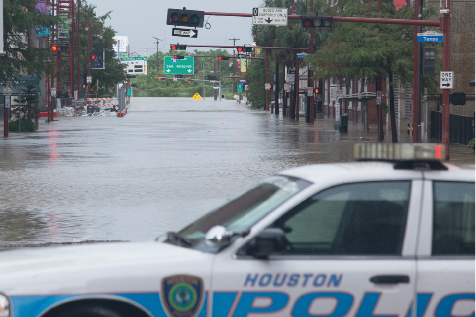
The Theater District in downtown Houston is flooded by water from Buffalo Bayou after it jumped its banks on Sunday, Aug. 22, 2017. Photo by Michael Stravato
But more than anything else, there were selfless acts of heroism, from the first responders who evacuated their own families before heading back into chest-deep water, to the Cajun Navy out-of-state volunteers who piloted their personal boats on around-the-clock rescue missions.
Hurricane Harvey amplified the strength, resilience and heart of the states coastal region. It showcased the unbelievable generosity of fellow Texans, who opened up their homes and their wallets to countless evacuees. And it highlighted just how well the states leaders could work together when they put deep partisan divisions aside.
This natural disaster also underscored The Texas Tribunes role as a trusted and reliable source of information at home and around the globe, giving our newsroom a sense of responsibility like never before. We owe a debt of gratitude to our national investigative reporting partners, ProPublica and Reveal.
In a New York Times op-ed published Aug. 30, columnist David Leonhardt wrote in Houston, Warned of our prescient investigative reporting projects of the last year, which foretold how Houston was ripe for the perfect storm.
When the national spotlight moves away, The Texas Tribune and its partners ProPublica and Reveal will still be on the ground in Houston, devoting real resources to asking the tough questions that are crucial to this battered regions future.
Emily Ramshaw, Texas Tribune Editor-in-Chief



1. Before the Storm
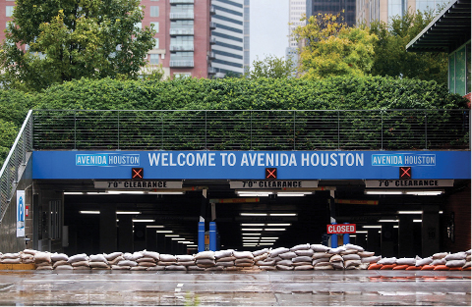
Pu Ying Huang
Why Houston Isnt Ready for Hurricane Harvey
Last year, The Texas Tribune, ProPublica and Reveal from the Center for Investigative Reporting investigated Houstons vulnerability to hurricanes and torrential rainstorms. The nations fourth-largest city is sure to see the latter in the coming days. Heres what we know about what could happen.
By Neena Satija, Kiah Collier and Al Shaw | August 25, 2017
The brunt of Hurricane Harvey is projected to miss Houston, but the sprawling metropolis is likely to face massive flooding from its third crippling storm in the past three years.
It underscores a new reality for the nations fourth-largest city: Climate change is making such storms more routine. Meanwhile, unchecked development in the Houston area is wiping out the pasture land that once soaked up floodwaters. Last year, we explored in detail how Houstons rapid expansion has greatly worsened the danger posed by flooding.
How bad things get in Houston depends on where and how quickly the rain falls. But many are already drawing comparisons to 2001s Tropical Storm Allison the worst rainstorm to hit an American city in modern history. Allison dropped 40 inches of rain on the city in five days, killed nearly two dozen people and caused $5 billion in damage in the county that includes Houston. The map on the next page shows how many homes, businesses, schools and other structures flooded. As you can see, a lot of flooded areas were outside the 100-year floodplain the area the federal government says faces a 1 percent chance of flooding every year.
Tropical Storm Allison largely spared western parts of the Houston area. But that wasnt the case during a more recent storm that also crippled the sprawling metropolis. A flood in April 2016 nicknamed the Tax Day flood because it fell on the deadline to file federal income taxes paralyzed northwestern portions of the city and surrounding suburbs. Those areas have exploded in population in recent years.
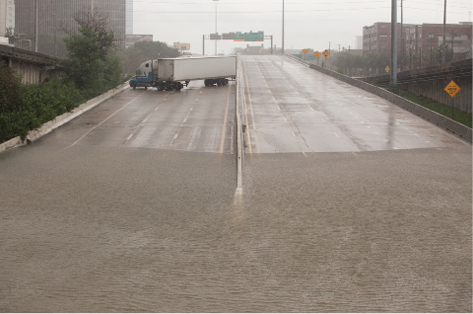
Interstate 45 in downtown Houston on Sunday, Aug. 27, 2017 after heavy rains from Harvey. Photo by Michael Stravato



